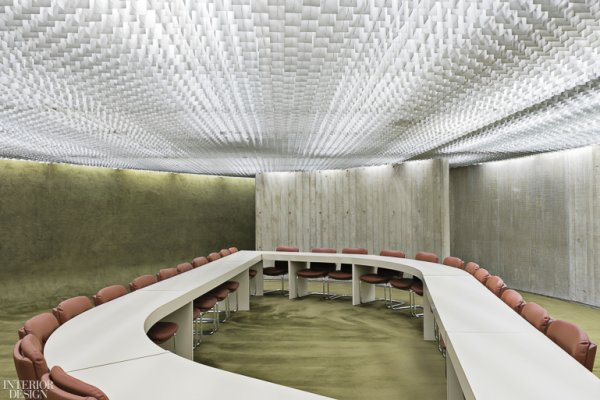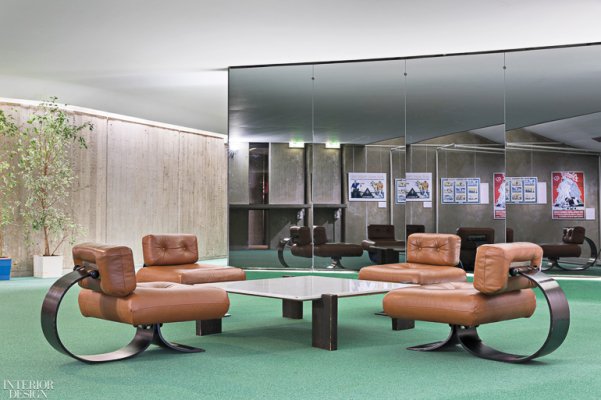Paris is overdue for it's 100 year flood.
Can Anyone Stop Paris From Drowning?
MADELEINE SCHWARTZ
The city is preparing for the return of a hundred-year flood that could displace millions.
I.
In late 2019, trucks carrying Greek statues, Egyptian sarcophagi and sculptures by Bernini departed from the Louvre Museum in the center of Paris. Bound for Liévin, a small French town near the Belgian border, the artworks were wrapped in frames and stacked on pallets for the journey.
Liévin was not a well-known cultural capital. A former mining center, its most prominent public art was a sculpture
commemorating a 1974 explosion that killed 42 workers. The trucks were heading to a low triangular building northeast of the city. Once unpacked, the artworks would be stored along a “boulevard” lined with doors 5 meters tall, either placed along 26 kilometers of hallways or hung up on mesh wiring. Ninety-six stone columns that had been raised out of a ditch along the rue de Rivoli were covered in plastic wrap and transported on wooden pallets to be unpacked in the northern town, near a small satellite of the museum.
After 16 months of to-ing and fro-ing, the trucks completed their mission: 100,000 artworks in the Louvre’s underground storage had been
removed from Paris. The last time this kind of evacuation took place was the late 1930s, at the advent of the German occupation, when artworks were hidden away to the Château of Chambord. This time, the Louvre was preparing for another sort of catastrophe: the inevitable yet unpredictable flooding of the Seine.
The Paris region sits at the
meeting of four rivers: the Seine, the Marne, the Oise and the Yonne. Visitors to the city tend to follow their eyes upward toward the city’s monuments and spires. But under the Eiffel Tower lies a
vast water table. Streams course through the soil, cutting their own paths across the earth. The observant flâneur might notice that the name of the city’s hippest neighborhood, Le Marais, translates to “the marsh.” In the southeast of the city, small metal plaques
mark the passage of a river called the Bièvre under the sidewalks; it was pushed underground in the early part of the 20th century. Under the Palais Garnier, with its paintings by Marc Chagall, is a 10,000 square meter artificial lake, which inspired Gaston Leroux to set his novel
The Phantom of the Opera there. Now police and firefighters use it to practice scuba diving. French protestors used to shout, “Sous les pavés, la plage!” — “Under the cobblestones lies the beach!” They were almost correct. Deep underneath the roads of Paris there is not sand but pools of water.
The chalky land is riven with holes; over the past century, it has been drilled and dug up and drilled again. Paris lies atop 217 kilometers of metros, 2,600 kilometers of sewers and 300 kilometers of catacombs; there are also conduits for water, telephone cables, electricity, and the new tunnels of what will be the Grand Paris Express, a planned subway system that will connect the city to its suburbs. Every year, the water threatens to rise up through these tunnels.
Unlike floods caused by storms or bad weather, rivers tend to rise and fall slowly; asynchronous with the water table, their movements are irregular and uncertain. Though scientists are currently working to create models of what the flood will look like and where it might flow, it is hard to predict where, and how much, water will pour into the streets. In 2017, construction workers in the northeast of Paris accidentally
pierced through the water table, flooding the train system and halting traffic for days. The accident was a small example of what awaits in the case of a hundred-year flood, which could occur at almost any point. According to Serge Garrigues, a retired general once in charge of overseeing such disasters, “It could be that everything works fine. But if we end up in this kind of situation, all of a sudden, we might have a whole transportation network that collapses.”
II.
There’s reason to be worried. After all, Paris has flooded before. The last catastrophe to overtake Paris occurred about a hundred years ago, in 1910. It started in January, after a fall heavy with snow and rain. The river began to rush so fast that people upstream could not take accurate measurements of the swell. Paris depended on the Seine for deliveries of food and supplies, but the speed of the water moving along the banks prevented ships from docking. ...
https://www.thedial.world/issue-6/france-paris-floods-seine-preparation




